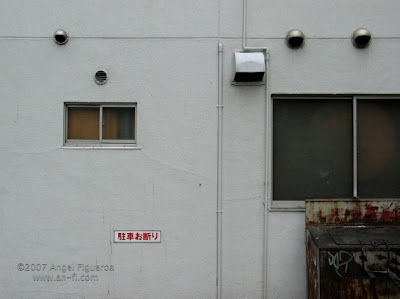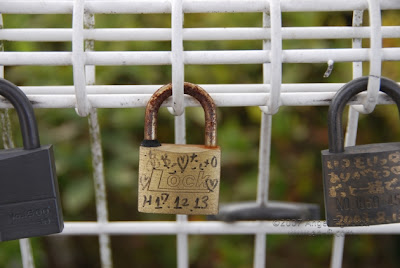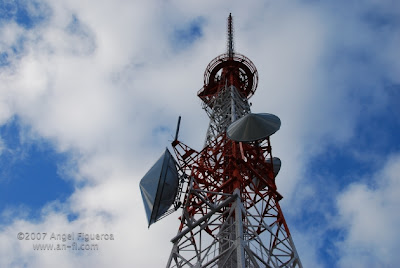31 January 2007
30 January 2007
Kyoto things
Posted by
an-fi (Angel Figueroa)
at
11:36 PM
2
comments
![]()
Labels: Japan, Kyoto, modern, traditional, urban
27 January 2007
26 January 2007
24 January 2007
Swastika
Last week there was a BBC news item about the European Union proposing a ban on the display of the swastika. Hindu groups across the union were against the proposal because such a ban was discriminatory. See article. They rightly point out that the swastika had been a religious symbol for thousands of years before the Nazis adopted it as a symbol of its fascist regime. And yet for Westerners --especially Europeans-- the swastika is understandably associated with an evil that resulted in the suffering and ruination of World War Two and the persecution of all peoples deemed inferior to the Nazis.
They rightly point out that the swastika had been a religious symbol for thousands of years before the Nazis adopted it as a symbol of its fascist regime. And yet for Westerners --especially Europeans-- the swastika is understandably associated with an evil that resulted in the suffering and ruination of World War Two and the persecution of all peoples deemed inferior to the Nazis.
The swastika was extensively used by Hindus but was adopted --or developed independently -- by many peoples before the Nazis took it as their own. Examples include Buddhists, Celts, some Native American Indian tribes, and the Akan civilisation of south-west Africa. See Wikipedia: swastika.
Here in Japan, the swastika is not only seen at temples as an obviously religious symbol but also on secular maps to indicate the location of a temple. The same can be said in most other countries in Asia, from Korea to Indonesia.
When I lived in Canada, I associated the swastika with the German war machine. As a Westerner living in Japan, I now first see the swastika as a symbol of Buddhism. When the change happened I am not sure, but I was struck by that contrast when I came across the BBC news item. As for Japanese people, it is my impression that most are puzzled by how such a religious symbol was corrupted in the first place.
Perhaps it would be near impossible for Europe to reconcile with the conflicting meanings of the swastika, due to the incredible suffering associated with that symbol. And yet perhaps a visit to a Buddhist or Hindu temple in Asia might contribute towards its renewed understanding as a symbol of peace.
Posted by
an-fi (Angel Figueroa)
at
7:06 PM
2
comments
![]()
Labels: Japan, opinion, shrines/temples
23 January 2007
22 January 2007
Auto-portrait
That's an automated photo machine on the left. Good enough for me -- for a self-portrait.
note: no cropping whatsoever
Posted by
an-fi (Angel Figueroa)
at
11:52 PM
0
comments
![]()
21 January 2007
20 January 2007
Bridge...
...over the Yodogawa river; taken from the top of the Umeda Sky Building. (Nikon 18-200mm VR lens with six cross filter).
Posted by
an-fi (Angel Figueroa)
at
9:45 PM
0
comments
![]()
Labels: Japan, modern, nightshots, Osaka
17 January 2007
Namba alleys
16 January 2007
Ikoma Skyland, whimsical

Ikoma lies east of Osaka City, a thirty minute train ride from Namba station. It's one of Osaka's suburb cities, known for its mountain of the same name that, on clear days, can be seen from most tall buildings in central Osaka. The view from my own office building reveals the mountain peak is home to a half-dozen huge telecom towers, but I had never been to Ikoma mountain until Sunday, when I decided to go on a whim.
And it became a whimsical day starting with the cable cars which go from Ikoma station to the half-way point up the mountain. One is decked out as a dog, and the other a cat!
From the mid-point another cable car goes up to the top, which is home, oddly enough, to an amusement park called Skyland Ikoma. It's situated right beside the red and white telecom towers. Although the amusement park closes for the winter break, the entrance gates are left open and you can stroll through the grounds. That's probably to cater to hikers, as there are hiking trails over the mountain that might otherwise be inaccessible. It felt a little eerie walking through an abandoned amusement park, with all the rides closed and no one else to be seen. But it lent me three things: clean air, uncrowded space, and some things to photograph.



In a corner of Skyland Ikoma, beside an empty jet coaster, was an area of benches with a view over northern Nara prefecture. In front of the benches there was a white wire fence and latched onto the fence were dozens of security locks, apparently left there by someone's sweetheart declaring a promise or two. Some locks were very new, others rusted and partly corroded, the inscriptions barely visible.
Whimsical indeed.
Posted by
an-fi (Angel Figueroa)
at
11:45 PM
0
comments
![]()
Labels: buildings, Japan, Kansai, modern, travelogue






















































